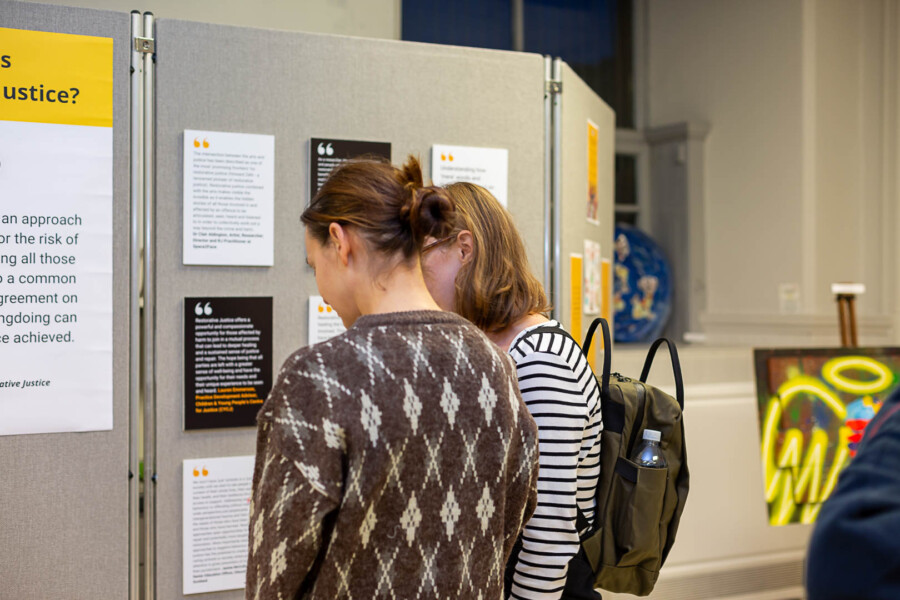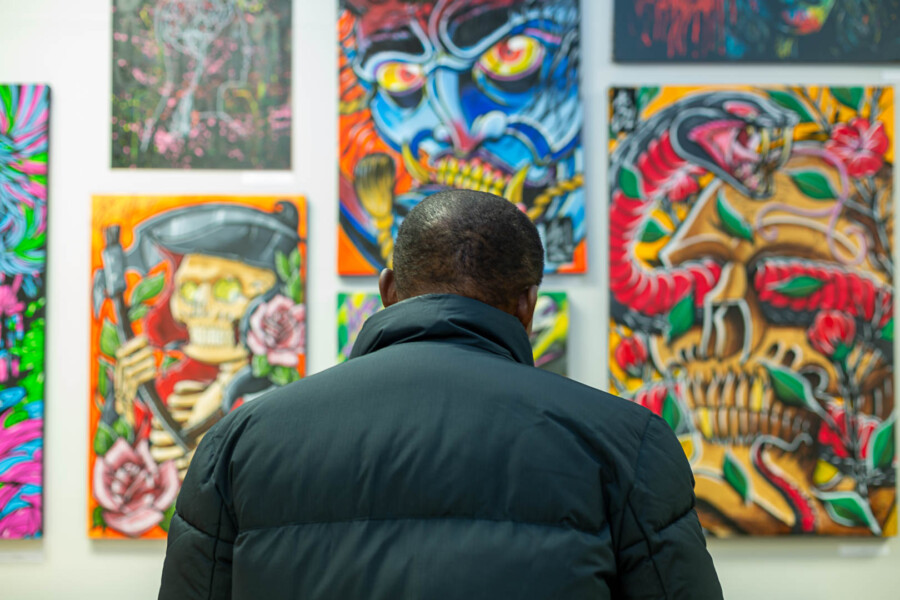The Role of Art in Communicating Restorative Justice
Community Justice Scotland’s restorative justice development officer Inesa Vėlavičiūtė reflects on an art exhibition held to raise awareness and support for restorative justice in Scotland.

I can’t stop thinking about a little boy at the exhibition, his face lighting up with pride as he posed in front of his dad’s painting. I wonder what that moment will mean to him as he grows up. Will it help him process the impact of the harm his dad caused? Will it play a small part in his healing journey? Moments like these remind me why we do this work.
In October, we had the privilege of hosting Restorative Voices: Seen and Heard, a multimedia art exhibition designed to raise awareness of restorative justice (RJ) and its potential to transform lives. Presented in collaboration with the Scottish Prison Service (SPS) and Fife College, the exhibition showcased RJ-inspired artwork created by people in custody at HMP Low Moss.

Held as part of the Scottish Mental Health Arts Festival 2024, the exhibition also aligned with the festival’s theme, In/Visible. This theme couldn’t have been more fitting. It invited reflection on what it means to be seen or unseen – whether it’s individuals in custody, their families, or the harm caused by crime. Through the artworks, we hoped to make the invisible visible: to challenge stigma and break down stereotypes, creating a bridge between life inside and outside prison walls.
The exhibition was staged at Maryhill Community Centre in Glasgow because we wanted a warm, welcoming space where families and friends of those who had created the artwork could come together to celebrate the creativity of their loved ones. It was about bringing them into the heart of the community where their voices could be heard – sparking conversations and creating connections, encouraging understanding and inclusion.

Art has a unique way of reaching people. It can cut through the noise, allowing us to express things words alone often can’t. Visitors to the exhibition didn’t just admire the art; they engaged with our team, asked questions, and learned about the principles of RJ. The exhibition became more than a display; it was a dialogue, a space to reflect on how restorative justice prioritises people, addresses harm, and supports rehabilitation.
By shining a light on the hidden harm caused by crime – not just the act itself – we opened up meaningful conversations about RJ’s potential to reshape Scotland’s justice landscape. But this is just the beginning. To make restorative justice accessible to all, we have to keep talking, being creative, and finding new ways to reach people.
- If you missed the chance to experience the exhibition in person, you can still explore the incredible artworks and moments from the event by following this link: Restorative Voices: Seen and Heard.
- Would you like to learn more about how restorative justice works, its benefits and Scotland’s progress with the development of services? Visit our RJ Learning Hub.
